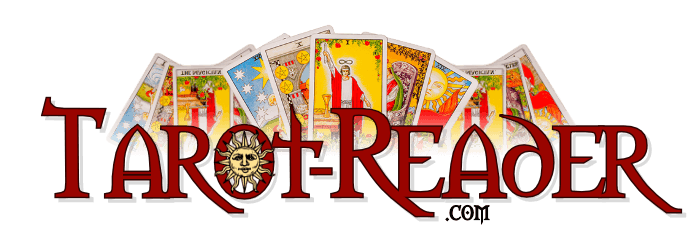Where does Tarot Come From?
Tarot comes from a long line of objects used for divination. Arab cultures engaged in cartomancy, or the use of cards for divination centuries before the tarot deck was used for the same purpose. There is a belief that tarot cards came from ancient Egypt, and that the symbolism was handed down from the ancients. There is no evidence of this, but that doesn’t diminish the power of the tarot anymore than the power of runes is diminished because runes were also once used to write letters and sign posts.
Tarot cards, as we know them, literally started as a playing deck. In about 1350, the Italian tarocchi, or tarot in French, was a set of playing cards with ornate, symbolic pictures. Like modern day playing cards and tarot cards, the deck included 4 suits with court cards like kings, queens, knights, jacks/pages as well as ten numbered cards.
It wasn’t until the late 18th century that occultists in England and France determined that the pictures in the cards were not merely ornamental but symbolic, and that the cards could be used for divination. The theory behind tarotology, or the basis for divine inspiration from interpreting tarot cards, is that the cards represent different aspects of life, life experiences, or life possibilities, and that the tarot card reader taps into the collective unconscious when choosing the cards to pick those that accurately represent the past, present, and future. Another theory is that the tarot card reader is guided by a spirit or by the universe itself to choose cards with symbolism that the reader will interpret to accurately represent the past, present, and future.
There are tarot decks for every taste and aesthetic, so listing all of them may be impossible. However, there are historically a few different types of tarot decks for which others can trace their origins.
The Fundamentals of the Modern Tarot Deck
The modern tarot deck was created in 1901, known as the Rider-Waite deck. A.E. White was a mystic and member of the Golden Dawn. He interpreted the symbolism on the 15th century tarocchi and had artist Deborah Coleman Smith illustrate his descriptions. This 78-card deck is the mother of almost all modern decks, as the symbolism and imagery for each cards hails from the Rider-Waite card illustrations.
While tarot decks can vary widely in their designs, every modern tarot deck has 78 cards, including 22 major arcana cards and 56 minor arcana cards.
The 22 major arcana cards numbered 0 – 21, with The Fool starting at 0 and ending with The World at 21. The 21 major arcana cards are not part of one of the suits. Each one is its own distinct archetype and symbolic message. The major arcana has been interpreted to be like a life’s journey, from being born as the Fool, to experiencing all that life has to offer, to The World, the end of life’s cycle.
The minor arcana consists of 56 cards over four suits: Pentacles, Swords, Wands, and Cups. The suits represent the four elements of Earth, Air, Fire, and Water, respectively. The elements have had a place in Western occultism since the times of the Greek and Roman empires, beginning with the study of alchemy. The elements are still a major component of astrology and magick within some pagan traditions and practices
The suit of Pentacles belongs to the element of Earth. Earth deals with the tangible, such as wealth, production, food, bodily needs, the physical world outside of the mind, and the feminine.
The suit of Cups belongs to the element of Water. Water deals with the emotional and psychic. Relationships, intuition, psychic ability, feelings, imagination, and the feminine are the province of water.
The suit of Wands belongs to the element of Fire. Fire is the spark of life, and as such, it rules energy, action, inspiration, creativity, sexuality, movement, passion, enthusiasm, and the masculine.
The suit of Swords belongs to the element of Air. Air is the intellect, the higher mind, invention, innovation, change, transcendence, agreement, communication, open conflict, and the masculine.
Each element of the minor arcana has 14 cards. There is an ace, king, queen, knight and page, and cards 2 – 10. Each of these cards has its own picture with its own meaning according to whichever element it belongs.
Using the Modern Tarot Deck
There is no definitive source on how a tarot deck should be used for a reading. There are recommended and popular spreads. Some readings may involve one card, some three, some upwards of forty-two. A.E. Waite of the Rider-Waite Deck, included in The Pictorial Key to the Tarot various spreads, including the Celtic Cross. However, a spread is as personal to the reader as is the link to the tarot deck.
There are as many possible spreads as the imagination can come up with. A reader may choose a specific spread based on the type of reading you request. There are readers who prefer to create their own spread. This is perfectly reasonable, as divination and magick are all personalized in order to increase their effectiveness.
